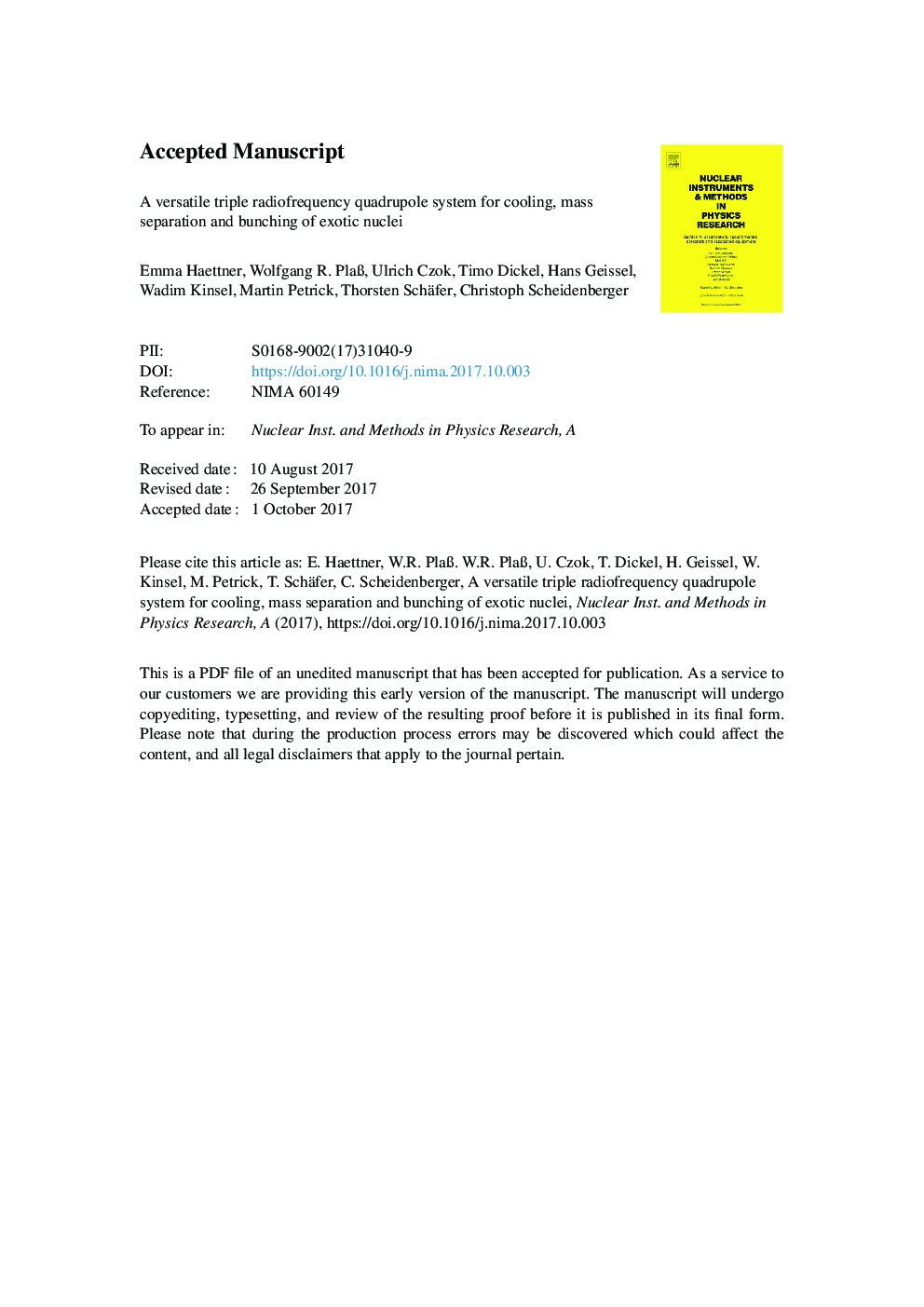| Article ID | Journal | Published Year | Pages | File Type |
|---|---|---|---|---|
| 8167249 | Nuclear Instruments and Methods in Physics Research Section A: Accelerators, Spectrometers, Detectors and Associated Equipment | 2018 | 56 Pages |
Abstract
The combination of in-flight separation with a gas-filled stopping cell has opened a new field for experiments with exotic nuclei. For instance, at the SHIP/SHIPTRAP facility at GSI in Darmstadt high-precision mass measurements of rare nuclei have been successfully performed. In order to extend the reach of SHIPTRAP to exotic nuclei that are produced together with high rates of unwanted reaction products, a novel compact radio frequency quadrupole (RFQ) system has been developed. It implements ion cooling, identification and separation according to mass numbers and bunching capabilities. The system has a total length of one meter only and consists of an RFQ cooler, an RFQ mass filter and an RFQ buncher. A mass resolving power (FWHM) of 240 at a transmission efficiency of 90% has been achieved. The suppression of contaminants from neighboring masses by more than four orders of magnitude has been demonstrated at rates exceeding 106 ions/s. A longitudinal emittance of 0.45 eVμs has been achieved with the RFQ buncher, which will enable improved time-of-flight mass spectrometry downstream of the device. With this triple RFQ system the measurement of e.g. N=Z nuclides in the region up to tin will become possible at SHIPTRAP. The technology is also well suited for other rare-isotope facilities with experimental setups behind a stopping cell, such as the fragment separator FRS with the FRS Ion Catcher at GSI.
Related Topics
Physical Sciences and Engineering
Physics and Astronomy
Instrumentation
Authors
Emma Haettner, Wolfgang R. PlaÃ, Ulrich Czok, Timo Dickel, Hans Geissel, Wadim Kinsel, Martin Petrick, Thorsten Schäfer, Christoph Scheidenberger,
